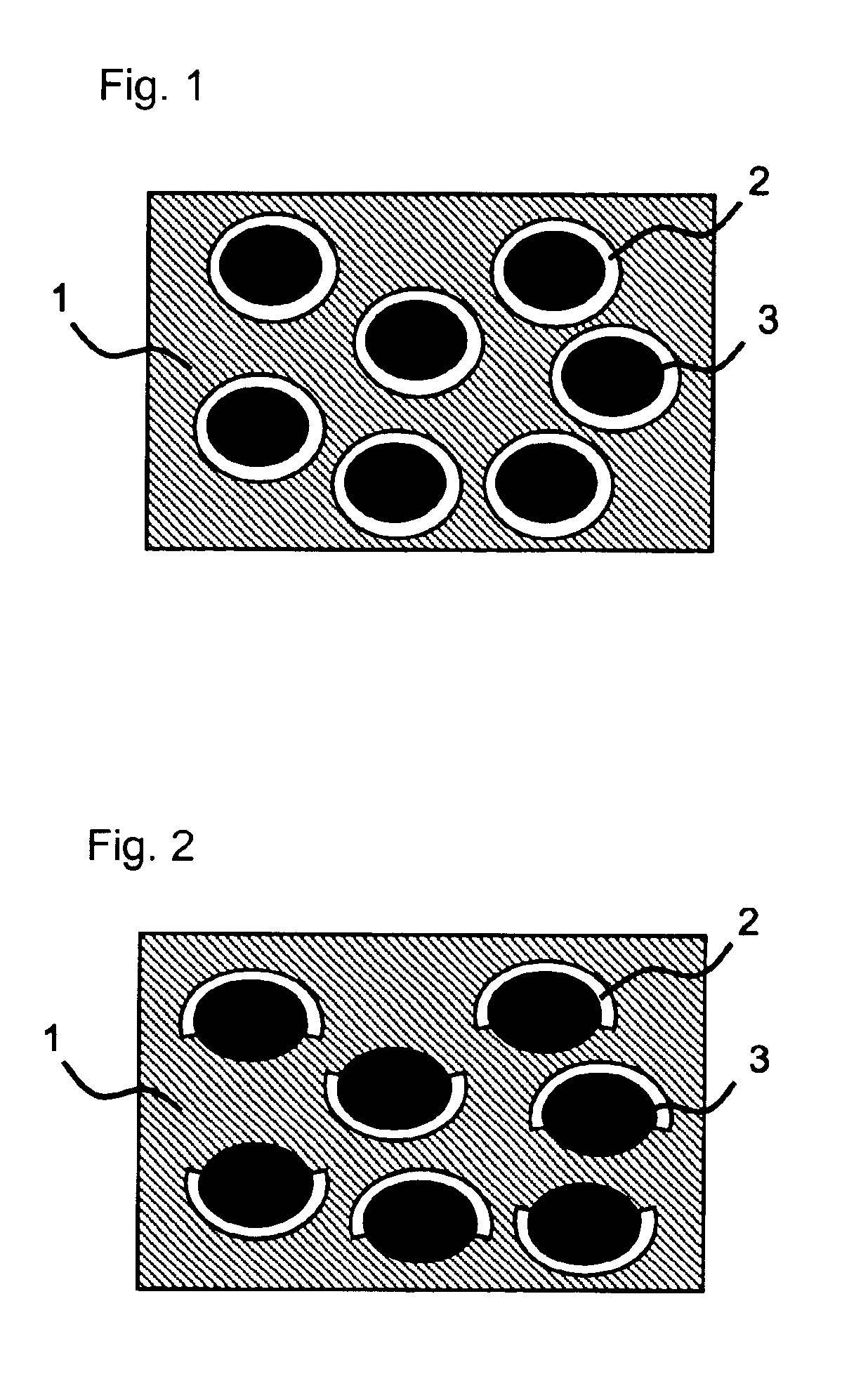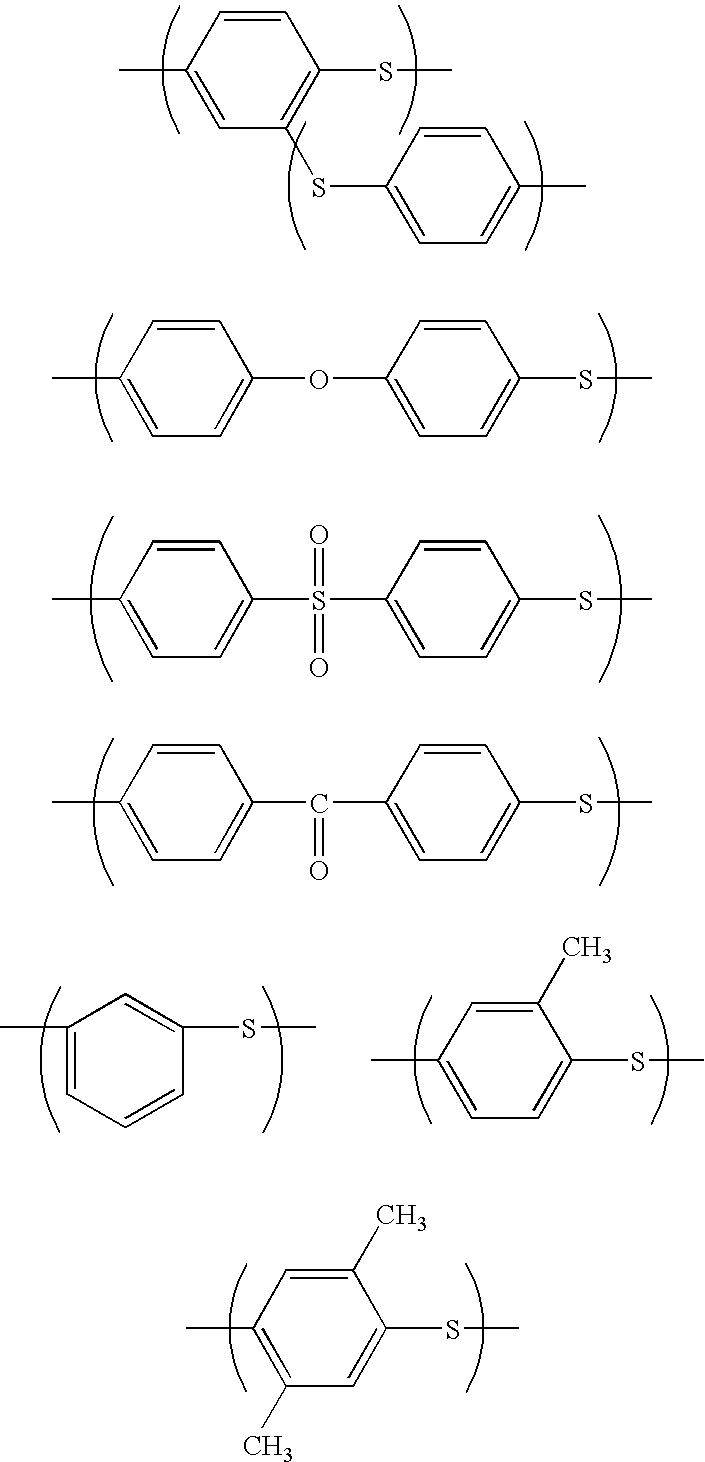Polyphenylene sulfide resin composition
a polyphenylene sulfide resin and composition technology, applied in the field of polyphenylene sulfide resin composition, can solve the problems of insufficient impact properties and lower toughness of pps resin, and achieve excellent impact properties, low temperature toughness, and flowability.
- Summary
- Abstract
- Description
- Claims
- Application Information
AI Technical Summary
Benefits of technology
Problems solved by technology
Method used
Image
Examples
reference example 1
Production of PPS-1
[0110]A 20-liter autoclave having a stirrer and a valve at the bottom was charged with 2383 g (20.0 moles) of 47% sodium hydrosulfide (Sankyo Kasei Co., Ltd.), 836 g (20.1 moles) of 96% sodium hydroxide, 3960 g (40.0 moles) of N-methyl-2-pyrrolidone (hereinafter called NMP), 625 g (7.62 moles) of sodium acetate and 3000 g of ion exchange water, and while nitrogen was introduced at atmospheric pressure, the mixture was gradually heated up to 225° C., taking about 3 hours, to distil away 4200 g of water and 80 g of NMP. Then, the reaction vessel was cooled to 160° C. The amount of water remaining in the system per 1 mole of the charged alkali metal sulfide was 0.17 mole. The amount of hydrogen sulfide that had drifted away was 0.023 mole.
[0111]Subsequently 2925 g (19.9 moles) of p-dichlorobenzene (produced by Sigma-Aldrich) and 1515 g (15.3 moles) of NMP were added, and the reaction vessel was sealed under nitrogen gas. Then, with stirring at 400 rpm, the mixture wa...
reference example 2
Production of PPS-2
[0115]Polymerization, washing, recovery and drying were carried out as described for Reference Example 1, expect that the amount of p-dichlorobenzene added was 2944 g (20.0 moles). The obtained PPS-2 had an MFR of 270 g / 10 min, and a chloroform extractable fraction of 2.7%.
reference example 3
Production of PPS-3
[0116]The PPS-1 obtained as described for Reference Example 1 was heated at 200° C. for 8 hours in a nitrogen stream, to obtain a crosslinked PPS. The obtained PPS-3 has an MFR of 160 g / 10 min, and a chloroform extractable fraction of 2.1%.
PUM
| Property | Measurement | Unit |
|---|---|---|
| melt flow rate | aaaaa | aaaaa |
| temperature | aaaaa | aaaaa |
| melt flow rate | aaaaa | aaaaa |
Abstract
Description
Claims
Application Information
 Login to View More
Login to View More - R&D
- Intellectual Property
- Life Sciences
- Materials
- Tech Scout
- Unparalleled Data Quality
- Higher Quality Content
- 60% Fewer Hallucinations
Browse by: Latest US Patents, China's latest patents, Technical Efficacy Thesaurus, Application Domain, Technology Topic, Popular Technical Reports.
© 2025 PatSnap. All rights reserved.Legal|Privacy policy|Modern Slavery Act Transparency Statement|Sitemap|About US| Contact US: help@patsnap.com



